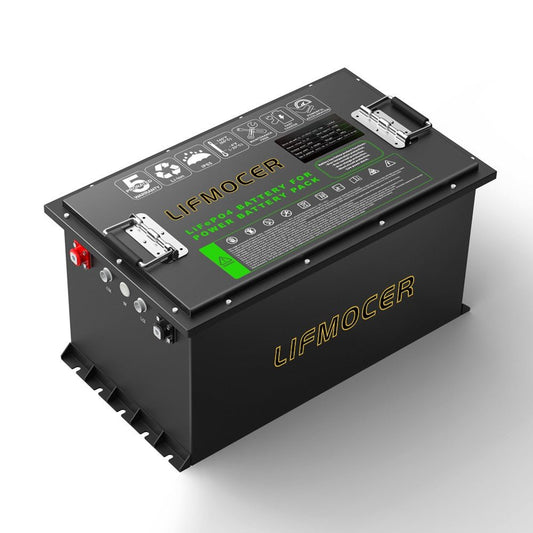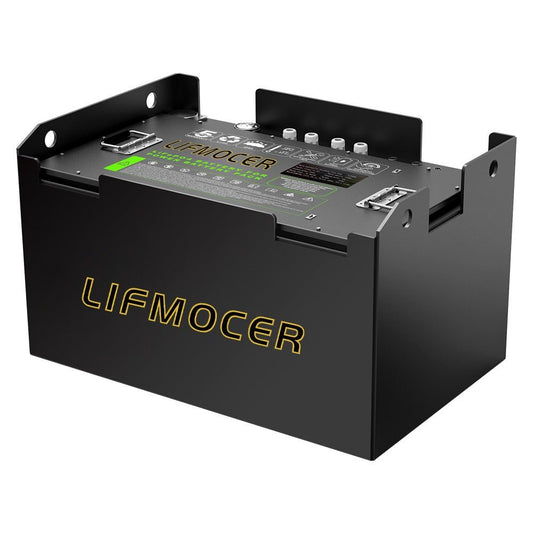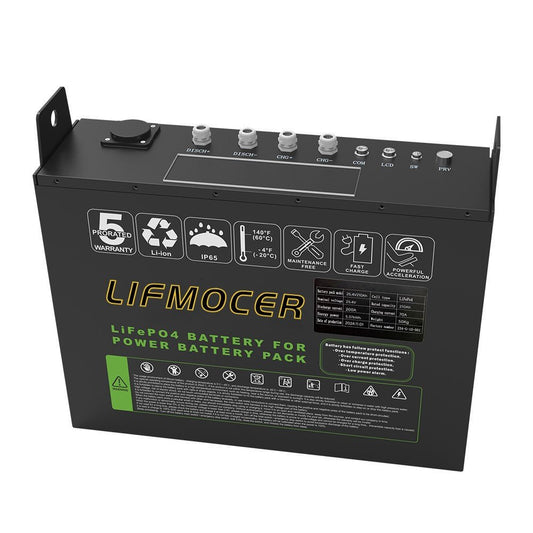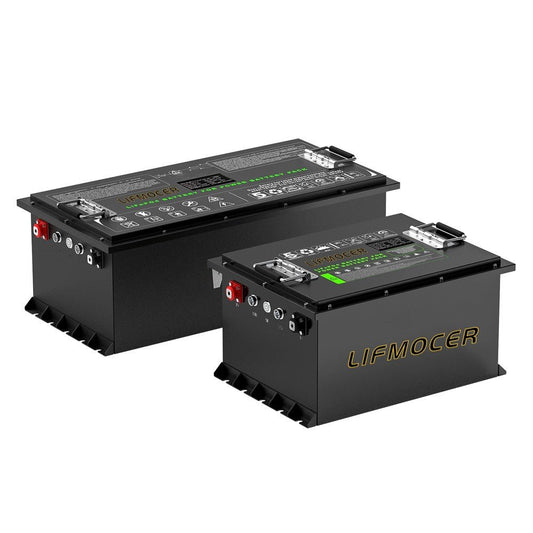How To Extend The Service Life Of Lithium Batteries?
Lithium battery, as an indispensable energy carrier in modern society, are reshaping the way of human life at an unprecedented pace. According to the statistics of the International Energy Agency, the global lithium-ion battery market is expected to exceed 250 billion US dollars in 2025, which clearly demonstrates its significance.
However, the issue of battery capacity degradation has always been a crucial bottleneck that restricts the long-term performance of lithium-ion batteries. Research shows that commercial lithium-ion batteries generally experience a capacity degradation of 10% to 20% after 500 to 1000 charge-discharge cycles. This phenomenon has led to a gradual reduction in the driving range of electric vehicles year by year, a continuous decrease in the efficiency of energy storage systems, and a shortened lifespan of consumer electronic products. What is more concerning is that the cost of battery replacement usually accounts for 30% to 50% of the total price of the equipment, which not only imposes a huge economic burden but also causes resource waste and environmental pressure.

In the face of this challenge, scientifically optimizing the strategies for battery usage and maintenance has become the key to extending its lifespan. This article will systematically analyze the cutting-edge technologies and practical methods for extending the lifespan of lithium batteries from various dimensions such as charging management, temperature control, and usage habits, so as to provide solutions for improving energy utilization efficiency and promoting sustainable development.
Lithium Battery Working Principle and Structural Composition
The lithium-ion battery is a secondary battery that realizes the storage and release of electrical energy based on the migration of lithium ions between the positive and negative electrodes. Its core working principle is that during charging, lithium ions are deintercalated from the positive electrode (such as lithium cobalt oxide, lithium iron phosphate, etc.), and then intercalated into the graphite negative electrode through the electrolyte. During discharging, the lithium ions move in the reverse direction (Figure 1). The typical structure is composed of a positive electrode, a negative electrode, an electrolyte, a separator, and a casing. For example, the NCA (nickel-cobalt-aluminum) ternary battery used in the Tesla Model 3 has a positive electrode made of nickel-cobalt-aluminum oxide, and the negative electrode adopts a silicon-carbon composite material to improve the energy density.

Advantages and Disadvantages of Lithium Batteries
Lithium-ion batteries have the advantages of high energy density (for example, the battery of an iPhone can reach 600 Wh/L), a low self-discharge rate, and a long cycle life (high-quality power batteries can achieve up to 8,000 cycles). However, their limitations are also quite obvious: they have a relatively high cost, are sensitive to high temperatures (thermal runaway may occur when the temperature exceeds 60℃), and experience capacity degradation under deep charging and discharging. Experimental data shows that the capacity degradation rate of a battery with a 100% deep cycle is three times that of a 50% shallow cycle. The LFP (lithium iron phosphate) battery of Contemporary Amperex Technology Co., Limited (CATL) has increased the cycle life to 8,000 times through structural innovation, which confirms the improvement effect of material optimization on these disadvantages.
Key Factors Affecting the Service Life of Lithium-Ion Batteries
Number of Charge-Discharge Cycles: The number of charge-discharge cycles that a battery undergoes during its use directly affects its service life. Generally speaking, the more charge-discharge cycles there are, the more the available capacity and efficiency of the battery will gradually decrease, thus shortening its service life.
Charge-Discharge Rate: A high charge-discharge rate will cause the internal temperature of the battery to rise, increasing the reaction rate and side reactions, which may lead to the degradation of battery materials and a shortened service life. Therefore, reasonably controlling the charge-discharge rate is crucial for extending the service life of the rechargeable batteries.
Operating Temperature: The operation of lithium-ion batteries at extreme temperatures will affect the efficiency of their chemical reactions. High temperatures will accelerate the aging of the battery, while low temperatures may lead to a decrease in capacity. Therefore, maintaining the lithium iron phosphate batteries within the recommended operating temperature range helps to extend its service life.
Depth of Charge-Discharge: The depth of charge-discharge refers to the degree of battery power consumption during each use. Excessive deep cycling (such as deep discharging or charging to 100%) will weaken the chemical stability of the battery, leading to faster degradation, while a moderate depth of charge-discharge can effectively protect the battery performance.
Overcharging and Overdischarging: Continuous overcharging (charging beyond the safety threshold) and overdischarging (discharging below the protection threshold) will damage the internal structure of the lithium battery, increase potential safety hazards, and significantly shorten the service life of the battery. Therefore, reasonable charge-discharge management is a necessary measure to ensure the long-term use of the battery.

Practical Tips for Extending Lithium Battery Life
- Optimize the Charging Strategy Avoid Overcharging and Overdischarging: Overcharging will cause lithium metal to deposit on the negative electrode after the li ion battery is fully charged. This may lead to fire or explosion, and also cause problems such as electrolyte decomposition and an increase in the internal temperature of the battery. Overdischarging will destroy the reversibility of the active materials of the positive and negative electrodes, resulting in a decrease in battery capacity and an increase in internal resistance. Therefore, it is recommended to keep the battery power within the range of 20% to 80%. When the power is lower than 20%, it should be charged in a timely manner. When the power is close to 80%, you can consider unplugging the charger.
- Use a Suitable Charger: Use the original or certified chargers. These chargers can ensure the stability of current and voltage and accurately control the charging parameters. Non-original chargers may not accurately control the voltage and current of the battery, resulting in the battery lithium overheating or unstable charging. Prolonged use will damage the battery.
- Avoid Charging at High Temperatures: Lithium batteries generate heat during charging. In a high-temperature environment, the heat generation will be more obvious, accelerating the chemical reaction rate inside the battery, leading to electrolyte decomposition, changes in the structure of the positive electrode material, etc., and reducing the batteries lithium capacity and energy density. The ideal charging temperature range is generally between 0°C and 45°C. You should avoid charging in high-temperature environments such as direct sunlight and inside a hot car.
- Control the Operating Temperature Avoid High-temperature Environments: High temperatures will have a negative impact on the performance and lifespan of lithium batteries and accelerate battery aging. When using lithium battery devices in a high-temperature environment, try to reduce the continuous usage time and avoid keeping the device in a high-load operation state for a long time. For example, Apple mobile phones are recommended to be used in an environment of 16°C to 22°C and avoid being exposed to high temperatures above 35°C.
- Heat Dissipation Measures: For some high-power devices or lithium battery devices used in environments with poor heat dissipation conditions, additional heat dissipation measures can be taken. For example, add heat sinks, improve the ventilation design of the device, or adopt active heat dissipation technologies such as fans and liquid cooling. Some high-end electric vehicles use liquid cooling systems, which can stabilize the lithium ion battery temperature at 20°C to 35°C, effectively improving the battery lifespan.
- Store the Battery Reasonably Stored Power Level: When storing the battery for a long time, the battery power should not be too high or too low. If the power is too high, such as storing it at full charge, it will accelerate the chemical reactions inside the battery and lead to battery aging. If the power is too low, the battery may be in an overdischarged state and be damaged. It is generally recommended to store the battery with a power level of 40% to 60%. For example, for an electric vehicle that is not used for a long time, the battery can be charged to about 50% before storage.
- Storage Temperature: The best storage temperature for lithium batteries is around 20°C to 25°C. Within this temperature range, the chemical reactions inside the li-ion battery pack are in a relatively stable state, and the self-discharge rate is low, which is beneficial for the long-term storage of the battery. If the temperature is too high, the self-discharge speed will increase, the electrolyte will dry up, and the electrode materials will age. If the temperature is too low, the ionic conductivity of the electrolyte will deteriorate, and the available capacity of the battery will decrease.
- Regular Charge and Discharge: Even if the battery is in storage, it should be charged and discharged regularly to maintain the battery's activity. It is generally recommended to charge and discharge the stored lithium battery once every 3 to 6 months. After charging the battery to an appropriate stored power level, continue to store it to prevent the battery's performance from deteriorating due to long-term inactivity.

Summary
Lithium-ion batteries serve as the core driving force of the energy revolution. Optimizing their performance and extending their lifespan are not only crucial for the user experience of individual devices but also closely related to the achievement of the global carbon neutrality goal and the future of sustainable resource utilization. Through scientific charging management, precise temperature control, reasonable usage habits, and forward-looking storage strategies, we can not only slow down the process of battery capacity degradation but also maximize the full life cycle value of the batteries. In the future, with the breakthroughs in new generation technologies such as solid-state batteries and lithium-sulfur batteries, as well as the in-depth application of AI algorithms in battery health management, the performance boundaries of lithium-ion batteries are expected to be further expanded. Let's join hands and take action. LIFMOCER will join hands with everyone and be driven by the dual wheels of technological innovation and behavioral change to jointly write a new chapter in the efficient utilization of energy and green development.
You May Need
LIFMOCER 48V 315Ah LiFePO4 Forklift Lithium Battery
- $2,599.99 USD
$3,099.99 USD- $2,599.99 USD
- Unit price
- / per
LIFMOCER Electric Forklift Lithium Battery 24V 280AH
- $1,499.99 USD
$2,299.99 USD- $1,499.99 USD
- Unit price
- / per
LIFMOCER 96V 210Ah LiFePO4 Golf Cart Rechargeable Batteries
- $2,699.99 USD
$3,599.99 USD- $2,699.99 USD
- Unit price
- / per
LIFMOCER 96V 315Ah Lithium Golf Cart Battery Deep Cycle
- $2,899.99 USD
$4,099.99 USD- $2,899.99 USD
- Unit price
- / per
LIFMOCER 72V 210Ah Golf Cart Lithium Batteries
- $2,499.99 USD
$3,199.99 USD- $2,499.99 USD
- Unit price
- / per















